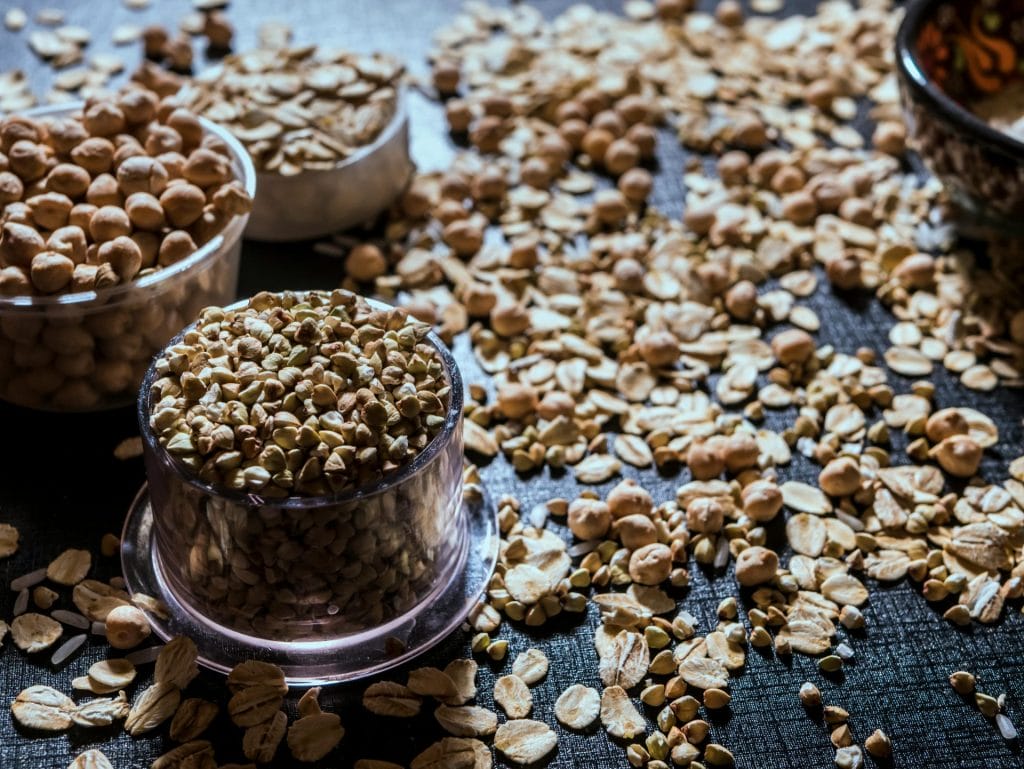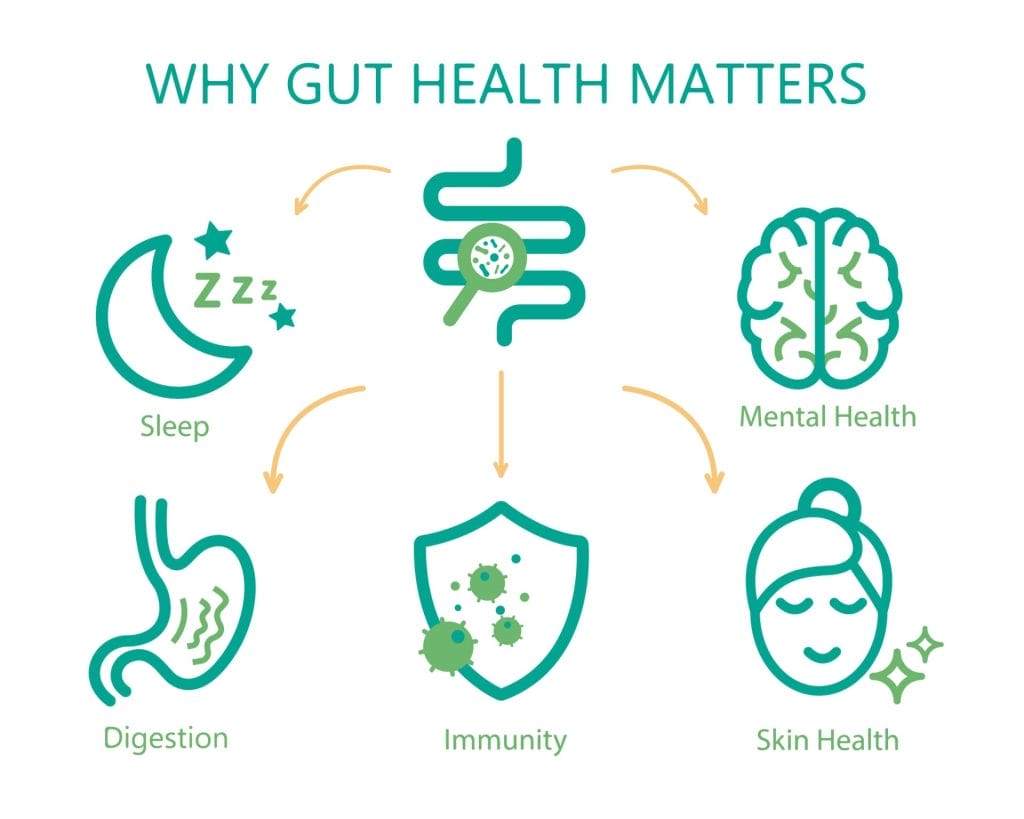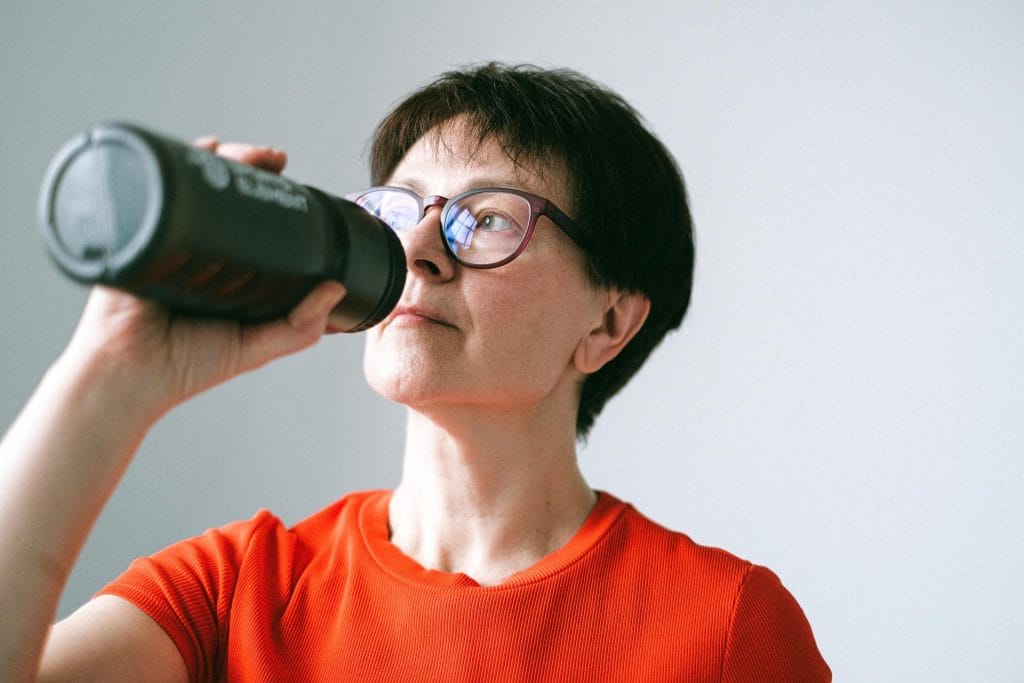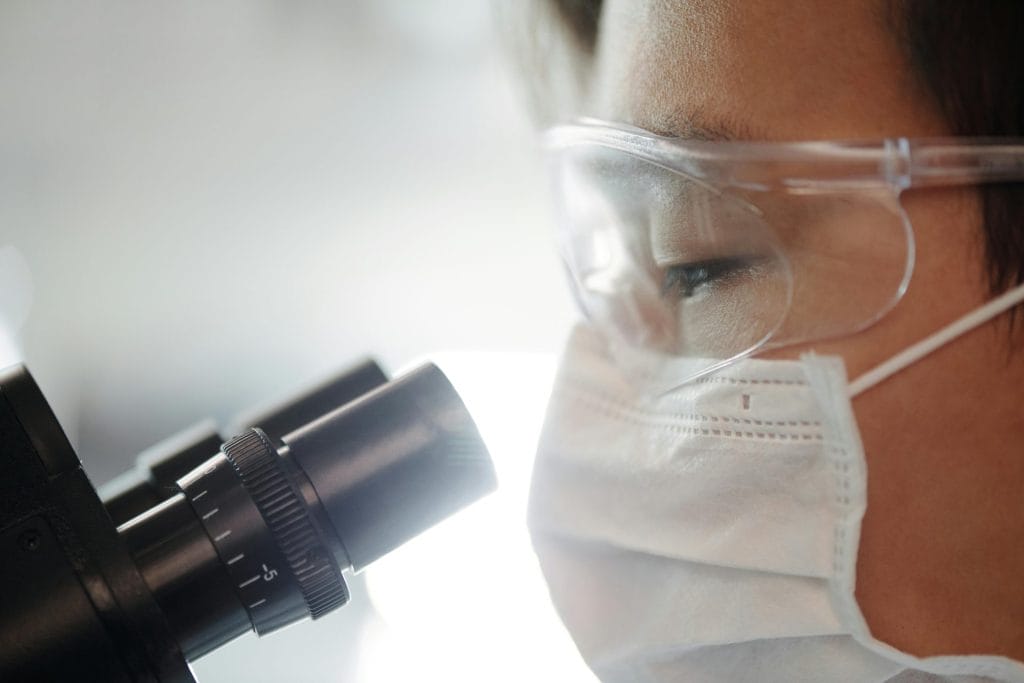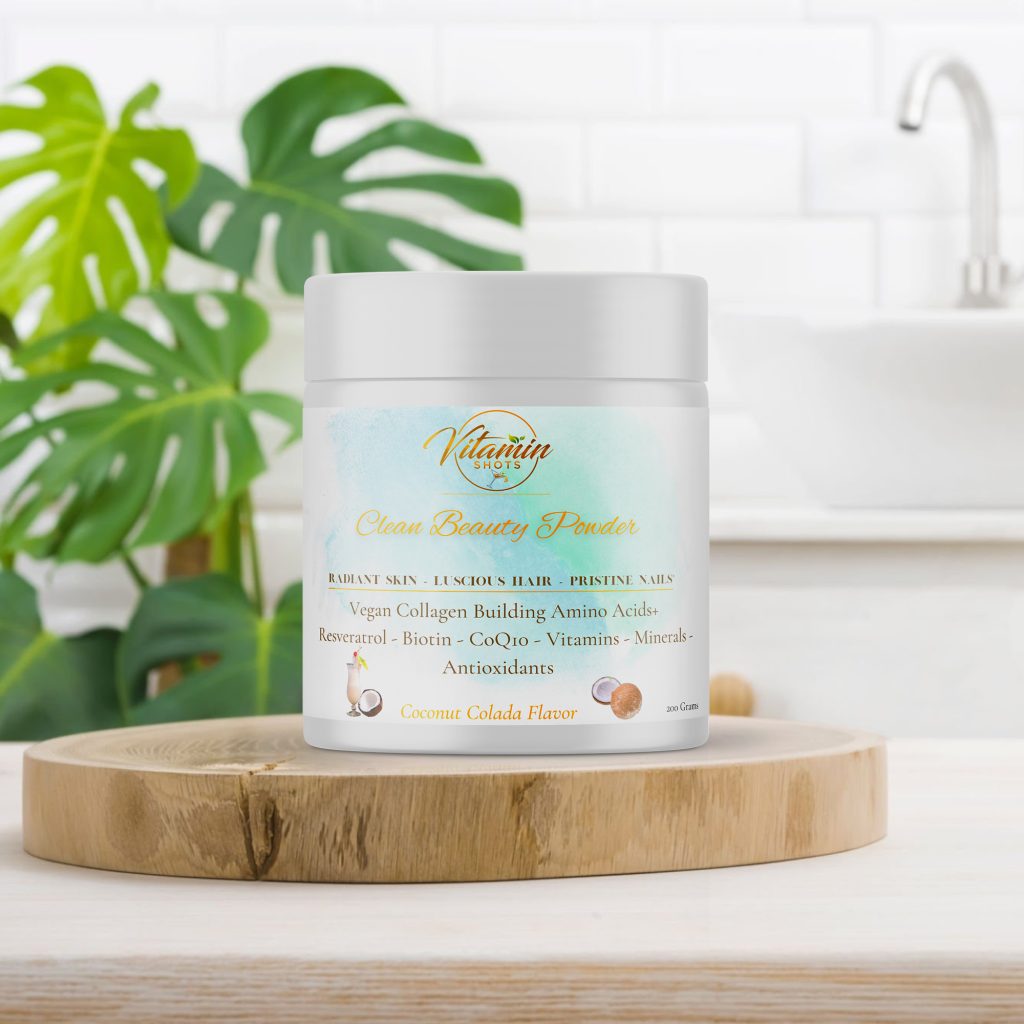Summary: Vegan Iron Supplement for Plant-Based Health
This comprehensive guide examines vegan iron supplement options for those following plant-based diets who face unique iron absorption challenges. Plant-based diets contain non-heme iron, which is less readily absorbed than heme iron from animal products, making supplementation often necessary for optimal health.
Key Topics Covered:
• Understanding iron deficiency in vegan and vegetarian populations • Types of iron supplements suitable for plant-based diets • Absorption enhancement strategies with vitamin C and other nutrients • Safety considerations and dosage recommendations • Quality factors including non-GMO, gluten free, and whole food sources
Essential Iron Forms for Vegans:
• Ferrous bisglycinate – gentle, chelated iron with superior absorption • Ferrochel chelated iron – patented amino acid chelated form • Whole food iron – derived from organic whole foods sources • Liquid iron supplement – alternative to capsule forms for better tolerance
Supplementation Strategies:
• Optimal timing and dosage for different demographics • Combining iron with vitamin C from organic acerola for enhanced absorption • B12 and folate co-supplementation for comprehensive blood health • Monitoring iron levels and preventing iron deficiency anemia
Safety & Quality Guidelines:
• Third-party testing and vegan certified products • Understanding supplement facts and daily iron requirements • Recognizing signs of low iron and when to seek medical guidance • Avoiding accidental overdose of iron-containing products
The Iron Challenge for Plant-Based Lifestyles
Following a vegan or vegetarian lifestyle offers numerous health benefits, but it also presents unique nutritional challenges that require careful attention. One of the most significant concerns for those on a plant-based diet is maintaining healthy iron levels. Iron is an essential mineral that plays a crucial role in oxygen transport, energy production, and overall health [1].
The challenge lies in the fundamental difference between the two types of iron found in food sources. Heme iron, found in animal products, is readily absorbed by the body with absorption rates of 15-35% [2]. In contrast, non-heme iron from plant sources has much lower absorption rates of only 2-20%, making it more difficult for vegans and vegetarians to maintain adequate iron stores [3].
This absorption difference means that individuals following a vegan diet need 1.8 times more iron than those consuming animal products [4]. For menstruating women, pregnant women, and growing children, this challenge becomes even more pronounced, often necessitating the use of a carefully selected vegan iron supplement.
Understanding Iron Deficiency in Plant-Based Populations
Iron deficiency is one of the most common nutritional deficiencies worldwide, affecting approximately 25% of the global population [5]. Among those following plant-based diets, the risk is significantly higher due to the lower bioavailability of plant-based iron sources.
Signs and Symptoms of Iron Deficiency
Recognizing the early signs of low iron is crucial for preventing progression to iron deficiency anemia. Common symptoms include:

- Persistent fatigue and weakness
- Pale skin, nails, or inner eyelids
- Shortness of breath during normal activities
- Cold hands and feet
- Brittle or spoon-shaped nails
- Unusual cravings for non-food items like ice or starch
- Restless leg syndrome
- Difficulty concentrating
Iron deficiency anemia occurs when iron stores become so depleted that the body cannot produce enough healthy red blood cells [6]. This condition affects oxygen delivery throughout the body, leading to more severe symptoms and potential health complications if left untreated.
Why Vegans Need More Iron
The human body has evolved to absorb heme iron more efficiently than non-heme iron. Plant-based iron sources are also subject to absorption inhibitors commonly found in plant foods, including:
- Phytates in grains and legumes
- Polyphenols in tea, coffee, and some vegetables
- Calcium in dairy alternatives and leafy greens
- Fiber, which can bind minerals and reduce absorption

These factors combine to create a perfect storm where getting enough iron becomes challenging, even with careful dietary planning focused on foods high in iron [7].
Types of Iron Supplements for Vegans
Not all iron supplements are created equal, and understanding the various forms available is crucial for selecting the most effective vegan iron supplement for your needs.
Ferrous Bisglycinate: The Gentle Champion
Ferrous bisglycinate represents one of the most advanced forms of supplemental iron available today. This chelated iron form is bound to the amino acid glycine, creating a stable complex that bypasses many of the absorption barriers that plague other iron supplements [8].
Key advantages of ferrous bisglycinate include:
- Superior absorption compared to traditional iron salts
- Reduced gastrointestinal side effects
- Less interaction with food components that inhibit absorption
- Easier on the stomach than conventional iron pills
Research has shown that ferrous bisglycinate can be absorbed up to 4.5 times better than ferrous sulfate, the most common form of iron found in basic supplements [9]. This makes it an excellent choice for vegans who need to maximize iron absorption efficiency.
Ferrochel Chelated Iron: Patented Precision
Ferrochel chelated iron represents a patented form of amino acid chelated iron that has undergone extensive clinical testing. This gentle iron form maintains its molecular integrity throughout the digestive process, ensuring optimal absorption while minimizing digestive upset [10].
Studies have demonstrated that Ferrochel is significantly more bioavailable than conventional iron salts, with absorption rates approaching those of heme iron from animal sources [11]. This makes it particularly valuable for individuals with sensitive digestive systems who have struggled with traditional iron tablets.
Whole Food Iron: Nature’s Approach
Whole food iron supplements are derived from concentrated food sources rather than synthetic compounds. These supplements often include iron from organic whole foods sources such as curry leaves, spinach, or other iron-rich plants [12].
The advantage of whole food iron lies in its natural matrix of co-factors and nutrients that support absorption and utilization. However, the iron content per capsule is typically lower than synthetic forms, requiring larger doses to achieve therapeutic levels.
Liquid Iron Supplement Options
A liquid iron supplement can be an excellent alternative for individuals who have difficulty swallowing capsules or experience digestive issues with solid forms. Liquid iron supplement for adults offers several advantages:
- Faster absorption as the iron is already in solution
- Easier dosage adjustment
- Better tolerance for sensitive individuals
- Can be mixed with vitamin C-rich juices to enhance absorption
However, liquid supplements may have taste considerations and shorter shelf lives compared to capsule forms.
Glam Dust
Radiant Skin – Luscious Hair – Pristine Nails
Vitamin Shots
The Ultimate Brain And Body Supplement
Vitamin Sprinkles
Fuel Your Brain – Nourish Your Body – With One Delicious Sprinkle
Enhancing Iron Absorption: The Vitamin C Connection
One of the most effective strategies for improving iron absorption is combining your iron supplement with vitamin C. This powerful antioxidant vitamin can increase non-heme iron absorption by up to 300% when consumed together [13].
Optimal Vitamin C Sources
An iron supplement with vitamin C provides the convenience of combined supplementation. Look for products that include vitamin C from organic acerola, as this natural source provides additional bioflavonoids that may further enhance absorption [14].
The recommended ratio is approximately 100mg of vitamin C for every 10mg of elemental iron. This iron with vitamin c combination helps convert iron from its ferric form (Fe3+) to the more absorbable ferrous form (Fe2+) [15].
Timing and Dosage Strategies
For maximum effectiveness, take your vegan iron supplement with vitamin on an empty stomach, preferably 1-2 hours before meals. However, if you experience stomach upset, taking it with a small amount of vitamin C-rich food can help while still enhancing absorption.
Avoid taking iron supplements with:
- Coffee or tea (wait at least 2 hours)
- Dairy products or calcium supplements
- High-fiber meals
- Antacids or proton pump inhibitors
Comprehensive Blood Health: Iron, B12, and Folate
Iron doesn’t work alone in maintaining healthy blood. For optimal red blood cell production and function, your body also requires adequate levels of vitamin B12 and folate [16].
The Iron and B12 Connection
Vitamin B12 deficiency is common among vegans, as this vitamin is primarily found in animal products. B12 is essential for healthy red blood cell formation and works synergistically with iron [17]. Many vegan iron supplements now include B12 to address both common deficiencies simultaneously.
Signs of B12 deficiency can overlap with iron deficiency symptoms, including fatigue, weakness, and cognitive difficulties. However, B12 deficiency can also cause neurological symptoms that iron deficiency cannot [18].
Folate’s Supporting Role
Folate, also known as vitamin B9, is crucial for DNA synthesis and red blood cell production. While folate deficiency is less common among vegans due to the high folate content in many plant foods, ensuring adequate intake supports optimal iron utilization [19].
A comprehensive supplement that includes iron, B12, and folate provides a complete foundation for healthy blood formation and can be particularly beneficial for women who are pregnant or menstruating women with higher nutritional requirements.
Safety Considerations and Quality Factors
When selecting a vegan iron supplement, safety and quality should be paramount considerations. Iron supplementation requires careful attention to dosage, as both deficiency and excess can cause health problems.
Understanding Safe Dosage Limits
The right amount of iron varies significantly based on individual factors:
- Adult men: 8mg daily
- Premenopausal women: 18mg daily
- Pregnant women: 27mg daily
- Postmenopausal women: 8mg daily
Most therapeutic iron supplements provide 25 mg of iron or more per serving. While this may seem high, it accounts for the lower absorption rates of non-heme iron and the increased needs of individuals with deficiency [20].
Critical Safety Warning
It’s essential to understand that accidental overdose of iron-containing products is a leading cause of fatal poisoning in children under 6 years of age [21]. In case of accidental overdose, contact a poison control center immediately. Keep all iron supplements out of reach of children and follow dosage instructions carefully.
Quality Indicators to Look For
When selecting a vegan iron supplement, prioritize products that are:
- Non-GMO: Ensuring ingredients are not genetically modified
- Gluten free: Important for individuals with celiac disease or gluten sensitivity
- Vegan certified: Confirming no animal-derived ingredients or testing
- Third-party tested for purity and potency
- Free from artificial colors, flavors, and preservatives
The supplement facts label should clearly indicate the form of iron used and the amount of elemental iron per serving. Products that have been evaluated by the food and Drug Administration for safety and efficacy provide additional assurance.
Special Considerations for Different Demographics
Iron Supplement for Women
Women have unique iron requirements due to menstruation, pregnancy, and breastfeeding. An iron supplement for women should account for these increased needs while providing gentle, well-absorbed forms of iron.
During menstruation, women can lose 15-20mg of iron per cycle, significantly increasing daily iron requirements [22]. A supplement for women and men may have different formulations to address these gender-specific needs.
Pregnant and Lactating Women
Women who are pregnant have dramatically increased iron needs to support fetal development and increased blood volume. The recommended daily intake increases to 27mg during pregnancy [23].
Iron supplementation during pregnancy should always be done under medical supervision, as both deficiency and excess can pose risks to maternal and fetal health. Many prenatal vitamins include iron, but additional supplementation may be necessary for women with diagnosed deficiency.
Athletes and Active Individuals
Athletes, particularly endurance athletes, may have increased iron needs due to: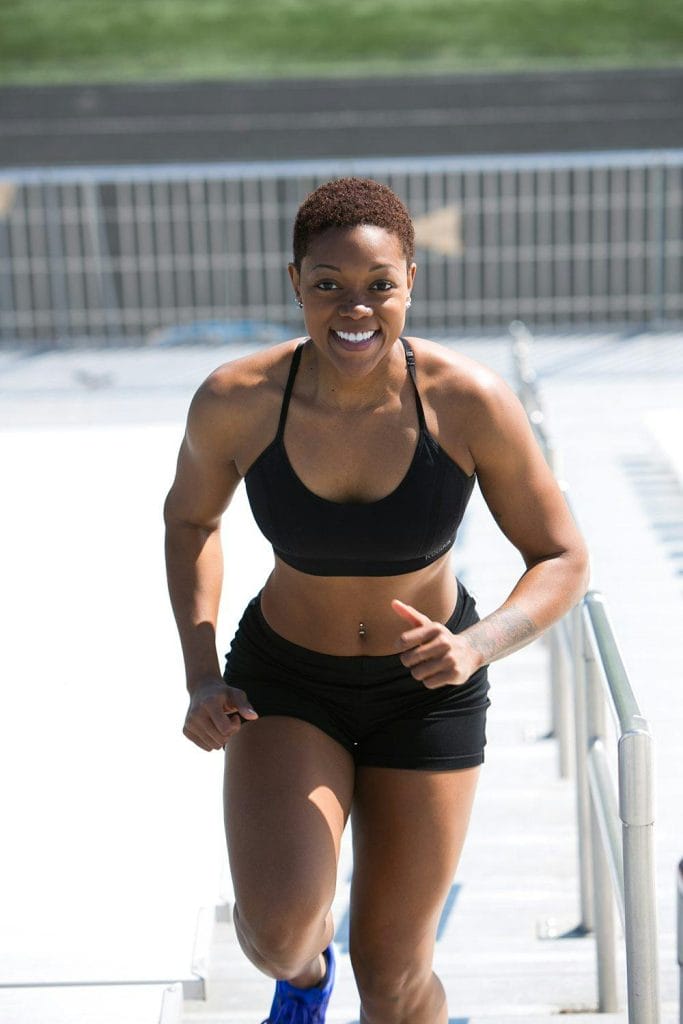
- Increased red blood cell production
- Iron losses through sweat
- Foot strike hemolysis in runners
- Increased blood volume
A vegan athlete following a plant-based diet faces the double challenge of increased needs and reduced absorption from plant sources [24].
Glam Dust
Radiant Skin – Luscious Hair – Pristine Nails
Vitamin Shots
The Ultimate Brain And Body Supplement
Vitamin Sprinkles
Fuel Your Brain – Nourish Your Body – With One Delicious Sprinkle
Maximizing Iron Stores Through Strategic Supplementation
Building and maintaining healthy iron levels requires a strategic approach that goes beyond simply taking an iron supplement. The goal is to increase iron levels efficiently while maintaining optimal absorption and minimizing side effects.
Creating an Iron-Friendly Environment
To maintain healthy iron levels, consider these absorption-enhancing strategies:
- Timing optimization: Take iron supplements on an empty stomach when possible
- Vitamin C pairing: Always combine with vitamin C-rich foods or supplements
- Avoid inhibitors: Separate iron intake from calcium, coffee, and tea
- Consider cooking methods: Use cast iron cookware when preparing foods high in iron
Monitoring Progress
Regular monitoring of iron levels is essential for safe and effective supplementation. Key markers include:
- Serum iron: Measures circulating iron
- Ferritin: Reflects iron stores in the body
- Total iron-binding capacity (TIBC): Indicates iron transport capacity
- Transferrin saturation: Shows how much iron is bound to transport proteins
Your healthcare provider can help interpret these values and adjust your iron supplementation accordingly.
Addressing Iron Levels Without Overdoing It
The goal is to maintain iron levels without excess, as too much iron can be harmful. Iron is a mineral that can accumulate in tissues and cause oxidative damage when present in excessive amounts [25].
Regular blood monitoring helps ensure you’re getting enough iron without exceeding safe limits. Most people following a vegan diet need ongoing supplementation, but dosages may be adjusted based on blood test results.
Innovative Iron Formulations
The supplement industry continues to develop new iron formulations designed to address the challenges of iron supplementation, particularly for those following plant-based diets.
Advanced Delivery Systems
Modern iron supplements employ various technologies to improve absorption and reduce side effects:
- Microencapsulation: Protects iron from gastric acid and reduces metallic taste
- Time-release formulations: Provide steady iron release throughout the day
- Liposomal iron: Uses lipid carriers to enhance cellular uptake
- Iron drops: Concentrated liquid formulations for precise dosing
Combination Formulas
Many manufacturers now offer comprehensive formulations that address multiple nutritional needs of vegans in a single product. These may include:
- Iron with vitamin C and B-complex vitamins
- Iron with digestive enzymes to support absorption
- Iron with probiotics to support gut health
- Iron with adaptogens to address fatigue
Organic and Whole Food Options
For those preferring natural sources, organic whole foods-based iron supplements offer an alternative to synthetic forms. These products typically have lower iron content per serving but may be better tolerated and provide additional nutrients and co-factors.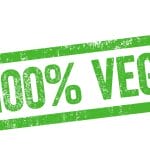
Choosing the Right Iron Supplement
With numerous iron supplements available on the market, selecting the right one can feel overwhelming. Here’s a systematic approach to finding the best vegan iron supplement for your needs:
Step 1: Determine Your Iron Needs
Before selecting a supplement, establish your baseline through blood testing. This helps determine:
- Current iron status
- Severity of any deficiency
- Appropriate supplementation level
- Monitoring timeline
Step 2: Select the Iron Form
Based on your tolerance and preferences:
- Sensitive stomach: Choose ferrous bisglycinate or Ferrochel chelated iron
- Difficulty swallowing: Consider liquid iron supplement options
- Natural preference: Look for whole food iron sources
- Convenience: Standard iron pills may be suitable if well-tolerated
Step 3: Evaluate Quality Factors
Prioritize supplements that are:
- Third-party tested for purity
- Non-GMO and gluten free
- Vegan certified
- Free from unnecessary additives
- Manufactured by reputable companies
Step 4: Consider Additional Nutrients
Look for formulations that include:
- Vitamin C for enhanced absorption
- B12 for vegans at risk of deficiency
- Folate for comprehensive blood health support
Potential Side Effects and Management
While iron supplementation is generally safe when used appropriately, some individuals may experience side effects, particularly when first starting supplementation or using higher doses.
Common Side Effects
The most frequently reported side effects of iron supplements include:
- Gastrointestinal upset (nausea, stomach pain)
- Constipation
- Dark-colored stools
- Metallic taste
- Heartburn or indigestion
Minimizing Side Effects
Several strategies can help reduce the likelihood and severity of side effects:
- Start slowly: Begin with lower doses and gradually increase
- Take with food: If stomach upset occurs, take with a small meal
- Choose chelated forms: These tend to be gentler on the digestive system
- Increase fiber: Add fiber to your diet to help prevent constipation
- Stay hydrated: Drink plenty of water throughout the day

When to Seek Medical Attention
Contact your healthcare provider if you experience:
- Severe abdominal pain
- Persistent vomiting
- Signs of allergic reaction
- No improvement in symptoms after several months
- Any concerning changes in health status
Glam Dust
Radiant Skin – Luscious Hair – Pristine Nails
Vitamin Shots
The Ultimate Brain And Body Supplement
Vitamin Sprinkles
Fuel Your Brain – Nourish Your Body – With One Delicious Sprinkle
Long-Term Iron Management for Vegans
Successfully managing iron status on a plant-based diet requires a long-term perspective and ongoing attention to both dietary and supplemental iron sources.
Dietary Foundation
While supplementation may be necessary, maintaining a diet rich in plant-based iron sources provides the foundation for long-term iron health. Key dietary strategies include:
- Including a variety of iron-rich plant foods daily
- Combining iron sources with vitamin C-rich foods
- Using iron-friendly cooking methods
- Limiting iron absorption inhibitors when possible
Supplement Cycling
Some individuals may benefit from cycling iron supplementation based on:
- Seasonal dietary changes
- Life stage requirements
- Blood test results
- Individual tolerance and response

Work with your healthcare provider to develop a personalized approach that maintains optimal iron levels while minimizing unnecessary supplementation.
Regular Monitoring
Long-term success requires regular monitoring through:
- Annual comprehensive blood panels
- Tracking of symptoms and energy levels
- Adjustment of supplementation based on results
- Coordination with healthcare providers familiar with plant-based nutrition
Conclusion
Maintaining healthy iron levels on a vegan diet is achievable with the right combination of dietary awareness, strategic supplementation, and regular monitoring. A well-chosen vegan iron supplement can bridge the gap between dietary iron intake and physiological needs, supporting optimal health and vitality.
The key to success lies in selecting a high-quality supplement that provides bioavailable iron in a form that minimizes side effects while maximizing absorption. Whether you choose ferrous bisglycinate, Ferrochel chelated iron, or a whole food-based formula, consistency and proper usage are essential for achieving and maintaining healthy iron levels.
Remember that iron supplementation is not a one-size-fits-all solution. Individual needs vary based on age, gender, health status, and dietary patterns. Working with healthcare providers familiar with plant-based nutrition ensures that your iron supplementation strategy supports your overall health goals while maintaining the ethical and environmental values that led you to choose a vegan lifestyle.
With proper planning, monitoring, and supplementation when needed, following a vegan diet can provide all the nutrients necessary for optimal health, including adequate iron for healthy red blood cells and sustained energy levels.
Frequently Asked Questions (FAQ)
What makes a vegan iron supplement different from regular iron supplements?
Vegan iron supplements are formulated without any animal-derived ingredients and are often designed to address the specific challenges of non-heme iron absorption. They may include additional nutrients like vitamin C and B12 that are commonly deficient in plant-based diets [26].
How much iron do vegans need compared to omnivores?
Vegans need approximately 1.8 times more iron than omnivores due to the lower bioavailability of non-heme iron from plant sources. This translates to about 14mg daily for men and 33mg for premenopausal women [27].
Can I take iron supplements with other vitamins?
Yes, iron can be taken with most vitamins, and vitamin C actually enhances absorption. However, avoid taking iron with calcium supplements, as calcium can inhibit iron absorption. B12 and folate work synergistically with iron and are often combined in vegan formulations [28].
What’s the best time to take iron supplements?
Iron is best absorbed on an empty stomach, ideally 1-2 hours before meals. However, if you experience stomach upset, taking it with a small amount of vitamin C-rich food can help while still supporting absorption [29].
How long does it take to see improvement in iron levels?
Most people begin to feel improvements in energy within 2-4 weeks of consistent supplementation. However, it can take 3-6 months to fully replenish iron stores, depending on the severity of deficiency [30].
Are liquid iron supplements better than capsules?
Liquid iron supplements may be absorbed more quickly and can be easier for people who have difficulty swallowing pills. However, they often have a stronger taste and may cause teeth staining if not diluted properly [31].
Can children take vegan iron supplements?
Children can take age-appropriate vegan iron supplements, but dosing should always be supervised by a pediatrician. Iron requirements vary significantly by age, and accidental overdose is a serious risk in young children [32].
What should I do if iron supplements cause constipation?
Try increasing fiber intake, drinking more water, and choosing a gentler form like ferrous bisglycinate. You can also split the dose throughout the day or take it every other day initially [33].
Do I need to take iron supplements forever on a vegan diet?
Many vegans benefit from ongoing iron supplementation, but individual needs vary. Regular blood testing helps determine if supplementation can be reduced or discontinued once optimal levels are achieved [34].
Can I get enough iron from food alone on a vegan diet?
While it’s theoretically possible to meet iron needs through food alone, it requires careful meal planning and attention to absorption enhancers. Many vegans find supplementation helpful to ensure adequate intake [35].
References
[1] Hurrell, R., & Egli, I. (2010). Iron bioavailability and dietary reference values. The American Journal of Clinical Nutrition, 91(5), 1461S-1467S.
[2] Hunt, J. R. (2003). Bioavailability of iron, zinc, and other trace minerals from vegetarian diets. The American Journal of Clinical Nutrition, 78(3), 633S-639S.
[3] Craig, W. J. (2009). Health effects of vegan diets. The American Journal of Clinical Nutrition, 89(5), 1627S-1633S.
[4] Institute of Medicine. (2001). Dietary Reference Intakes for Vitamin A, Vitamin K, Arsenic, Boron, Chromium, Copper, Iodine, Iron, Manganese, Molybdenum, Nickel, Silicon, Vanadium, and Zinc. National Academy Press.
[5] World Health Organization. (2015). The global prevalence of anaemia in 2011. Geneva: World Health Organization.
[6] Camaschella, C. (2015). Iron-deficiency anemia. New England Journal of Medicine, 372(19), 1832-1843.
[7] Hurrell, R., & Egli, I. (2010). Iron bioavailability and dietary reference values. The American Journal of Clinical Nutrition, 91(5), 1461S-1467S.
[8] Pineda, O., & Ashmead, H. D. (2001). Effectiveness of treatment of iron-deficiency anemia in infants and young children with ferrous bis-glycinate chelate. Nutrition, 17(5), 381-384.
[9] Ferrari, P., Nicolini, A., Manca, M. L., Rossi, G., Anselmi, L., Conte, M., … & Silvestri, S. (2012). Treatment of mild non-chemotherapy-induced iron deficiency anemia in cancer patients: comparison between oral ferrous bisglycinate chelate and ferrous sulfate. BioMed Research International, 2012.
[10] Ashmead, H. D. (2001). The roles of amino acid chelates in animal nutrition. Noyes Publications.
[11] Bovell-Benjamin, A. C., Viteri, F. E., & Allen, L. H. (2000). Iron absorption from ferrous bisglycinate and ferric trisglycinate in whole maize is regulated by iron status. The American Journal of Clinical Nutrition, 71(6), 1563-1569.
[12] Etzel, K. R. (2012). The fortification of foods with synthetic folic acid. Food and Chemical Toxicology, 50(11), 3847-3854.
[13] Hallberg, L., Brune, M., & Rossander, L. (1989). The role of vitamin C in iron absorption. International Journal for Vitamin and Nutrition Research, 30, 103-108.
[14] Delva, P., Pastori, P., Degan, M., Montesi, G., Lechi, A. (1996). Catechin and procyanidin levels in black tea, oolong tea and green tea. Journal of Pharmacy and Pharmacology, 48(8), 876-878.
[15] Lane, D. J., & Richardson, D. R. (2014). The active role of vitamin C in mammalian iron metabolism: Much more than just enhanced iron absorption! Free Radical Biology and Medicine, 75, 69-83.
[16] Green, R. (2017). Vitamin B12 deficiency from the perspective of a practicing hematologist. Blood, 129(19), 2603-2611.
[17] Watanabe, F., Yabuta, Y., Bito, T., & Teng, F. (2014). Vitamin B12-containing plant food sources for vegetarians. Nutrients, 6(5), 1861-1873.
[18] Stabler, S. P. (2013). Clinical practice. Vitamin B12 deficiency. New England Journal of Medicine, 368(2), 149-160.
[19] Bailey, L. B., Stover, P. J., McNulty, H., Fenech, M. F., Gregory, J. F., Mills, J. L., … & Yetley, E. A. (2015). Biomarkers of nutrition for development—folate review. The Journal of Nutrition, 145(7), 1636S-1680S.
[20] Cook, J. D., & Reddy, M. B. (2001). Value of meat for iron absorption from vegetarian meals. The American Journal of Clinical Nutrition, 73(1), 180-184.
[21] Litovitz, T. L., Klein-Schwartz, W., White, S., Cobaugh, D. J., Youniss, J., Omslaer, J. C., … & May, M. E. (2001). 2000 Annual report of the American Association of Poison Control Centers Toxic Exposure Surveillance System. The American Journal of Emergency Medicine, 19(5), 337-395.
[22] Harvey, L. J., Armah, C. N., Dainty, J. R., Foxall, R. J., John Lewis, D., Langford, N. J., & Fairweather-Tait, S. J. (2005). Impact of menstrual blood loss and diet on iron deficiency among women in the UK. British Journal of Nutrition, 94(4), 557-564.
[23] Scholl, T. O. (2005). Iron status during pregnancy: setting the stage for mother and infant. The American Journal of Clinical Nutrition, 81(5), 1218S-1222S.
[24] Malczewska, J., Raczynski, G., & Stupnicki, R. (2000). Iron status in female endurance athletes and in non-athletes. International Journal of Sport Nutrition and Exercise Metabolism, 10(3), 260-276.
[25] Bacon, B. R., Adams, P. C., Kowdley, K. V., Powell, L. W., & Tavill, A. S. (2011). Diagnosis and management of hemochromatosis: 2011 practice guideline by the American Association for the Study of Liver Diseases. Hepatology, 54(1), 328-343.
[26] Key, T. J., Appleby, P. N., & Rosell, M. S. (2006). Health effects of vegetarian and vegan diets. Proceedings of the Nutrition Society, 65(1), 35-41.
[27] Institute of Medicine. (2001). Dietary Reference Intakes for Vitamin A, Vitamin K, Arsenic, Boron, Chromium, Copper, Iodine, Iron, Manganese, Molybdenum, Nickel, Silicon, Vanadium, and Zinc.
[28] Lynch, S., Pfeiffer, C. M., Georgieff, M. K., Brittenham, G., Fairweather-Tait, S., Hurrell, R. F., … & Zimmermann, M. B. (2018). Biomarkers of nutrition for development (BOND)—iron review. The Journal of Nutrition, 148(suppl_1), 1001S-1067S.
[29] Cook, J. D., Dassenko, S. A., & Lynch, S. R. (1991). Assessment of the role of nonheme-iron availability in iron balance. The American Journal of Clinical Nutrition, 54(4), 717-722.
[30] Alleyne, M., Horne, M. K., & Miller, J. L. (2008). Individualized treatment for iron-deficiency anemia in adults. The American Journal of Medicine, 121(11), 943-948.
[31] Tolkien, Z., Stecher, L., Mander, A. P., Pereira, D. I., & Powell, J. J. (2015). Ferrous sulfate supplementation causes significant gastrointestinal side-effects in adults: a systematic review and meta-analysis. PloS one, 10(2), e0117383.
[32] Baker, R. D., & Greer, F. R. (2010). Diagnosis and prevention of iron deficiency and iron-deficiency anemia in infants and young children (0–3 years of age). Pediatrics, 126(5), 1040-1050.
[33] Cancelo-Hidalgo, M. J., Castelo-Branco, C., Palacios, S., Haya-Palazuelos, J., Ciria-Recasens, M., Manasanch, J., & Pérez-Edo, L. (2013). Tolerability of different oral iron supplements: a systematic review. Current Medical Research and Opinion, 29(4), 291-303.
[34] Saunders, A. V., Craig, W. J., Baines, S. K., & Posen, J. S. (2013). Iron and vegetarian diets. Medical Journal of Australia, 199(4), S11-S16.
[35] Hunt, J. R. (2002). Moving toward a plant-based diet: are iron and zinc at risk? Nutrition Reviews, 60(5), 127-134.


